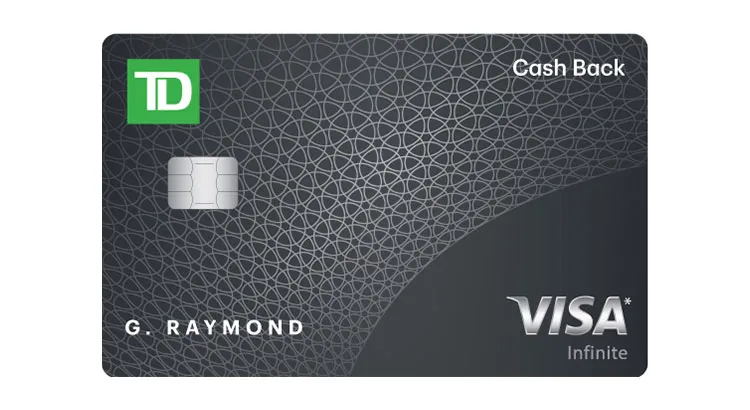How to identify invisible expenses that compromise your budget

Understanding Invisible Expenses
Managing a budget is an essential skill for financial stability. However, many people overlook invisible expenses that quietly chip away at their savings. These costs are often not immediately obvious but can significantly impact your overall financial health if left unchecked.
So, what exactly are these invisible expenses? These are charges that, while small or infrequent, can accumulate over time and lead to a substantial financial burden. Here are a few common examples:
- Subscription Services: With the rise of digital platforms, many Canadians find themselves subscribing to various services, such as Netflix, Spotify, or even gym memberships. While these can provide entertainment and convenience, it’s easy to forget about the monthly fees, especially if you have multiple subscriptions. For instance, a family that subscribes to a music service, a video streaming platform, and an online workout program may end up spending over $100 a month without even realizing it.
- Convenience Fees: These are extra charges that can occur when you use certain payment methods. For example, some concert ticket websites impose fees for using credit cards or opting for expedited delivery. If you frequently buy tickets or make purchases online, these fees can add up quickly, leading to potentially overlooked expenses. In Canada, be mindful of additional costs when using services such as PayPal, where specific types of transactions can carry hidden fees.
- Bank Fees: Many Canadians are unaware of bank fees that can come with their accounts. Charges for account maintenance, overdrafts, or ATM withdrawals from non-affiliated banks can compound, costing you more than expected. For instance, if your bank charges $2 for using another bank’s ATM and you do this frequently, your expenses can rise significantly over just a few months.
By identifying these expenses, you can take control of your budget effectively. This involves a diligent review of your spending habits and recognizing patterns that are detrimental to your finances. To do this, consider listing all your subscription services and their costs, checking your bank statements for hidden fees, and evaluating any convenience charges you regularly incur.
It is essential to evaluate your recurring costs regularly to avoid overspending. Set a reminder every three to six months to review your expenses, and don’t hesitate to cancel services you no longer use or need. Understanding where your money goes is the first step towards a healthier financial future.
In the following sections, we will explore effective strategies to uncover these hidden costs and provide practical tips to help keep your budget on track. By staying informed and proactive about your spending, you can safeguard your financial well-being and make more informed decisions about your money.
Recognizing Common Invisible Expenses
Identifying invisible expenses requires diligence and a keen eye for detail in your financial habits. To effectively tackle these costs, start by examining some common categories where these hidden expenses might lurk. Understanding these areas will empower you to take actionable steps to manage your finances better.
1. Dining Out and Takeout
Many Canadians enjoy the convenience of dining out or ordering takeout. While an occasional meal at your favourite restaurant is perfectly fine, frequent visits can lead to unexpected expense accumulation. A family that dines out twice a week may unknowingly spend over $200 a month. Consider tracking these expenditures for a month to see how quickly the costs add up. Aim to set a budget for dining and plan meals at home to reduce this invisible expense.
2. Small Purchases and Impulse Buys
Impulse purchases, often regarded as “small” costs, can derail your budget without you even realizing it. These expenses often include snacks, coffee from your favourite café, or even those last-minute items you grab while shopping. A simple $5 coffee every day can escalate to $150 a month. Regularly assess these mini-expenses; try keeping a spending journal for a month to identify patterns in your purchasing behaviour that could be trimmed.
3. Unused Memberships and Fees
Memberships are another source of invisible expenses that can accumulate silently. Gyms, clubs, and online services often require monthly or annual fees. If you sign up for a gym but only visit sporadically, those fees can begin to feel more like a burden than a benefit. Review your memberships every few months and cancel any that you are not actively using. You might be surprised at how much money can be saved by cutting out just a few unused subscriptions.
4. Utilities and Variable Bills
Your utility bills can also surprise you if you’re not regularly monitoring them. Seasonal fluctuations in energy use can lead to higher costs, but often, it’s the hidden fees or charges that creep in. For example, checking your internet bill for promotional discounts that have expired can reveal charges that may have gone unnoticed. To combat this, keep an eye on your bills every month and inquire about any unfamiliar charges that may appear.
5. Transportation Costs
Transportation can also be a significant area for hidden expenses. Whether you rely on public transit or your own vehicle, costs related to gas, maintenance, parking, or transit passes can add up quickly. For example, a daily commute can lead to thousands in yearly expenses. To better manage these costs, consider tracking your transportation spending and explore options like carpooling or public transit passes to cut down on daily expenses.
By being aware of these common categories of invisible expenses, you can start to take charge of your budget. The act of tracking your spending and being conscious of your financial habits is crucial. Begin with identifying one or two areas to focus on, and over time, you will likely see significant improvements in your overall financial health.
Strategies for Uncovering Invisible Expenses
Once you’ve identified common areas where invisible expenses can occur, the next step is to develop strategies for uncovering these hidden costs in your own life. Here are some practical steps you can take to create a clearer picture of your financial situation and identify areas where you can save.
1. Conduct a Detailed Expense Audit
Performing a detailed expense audit can be a powerful method to pinpoint invisible expenses. Start by gathering your recent bank statements, credit card bills, and receipts. Take a few hours to categorize each expense into essential categories such as housing, utilities, and groceries, but also be sure to create a category for those smaller or irregular expenses that often go unnoticed. For example, divide your “Dining Out” expenses into sections for restaurants, take-out, and coffee shops. By evaluating these details, you may find surprising amounts spent on seemingly insignificant areas.
2. Utilize Budgeting Tools
Embracing technology can significantly simplify the process of monitoring your spending. There are various budgeting applications available in Canada, such as Mint or YNAB (You Need A Budget), which help track your expenses automatically. These tools allow you to set limits for different categories, send alerts when you are nearing those limits, and generate reports that provide insights into your spending habits. Regularly reviewing reports generated by these apps can help you identify patterns and recognize areas where adjustments are needed.
3. Set Up Alerts for Unusual Transactions
Setting up transaction alerts with your bank is another effective way to keep track of your spending. Most financial institutions offer an option to notify you of withdrawals or purchases over a certain amount. This proactive measure can help catch any unwanted or mistaken transactions early on while also drawing your attention to recurring payments. You may notice charges you weren’t aware of, such as monthly maintenance fees or subscription renewals, allowing you to address them promptly.
4. Adopt a 30-Day Rule for Non-Essential Purchases
When considering non-essential purchases, apply the 30-day rule. When an impulse buy strikes or you’re tempted to purchase an item that isn’t a necessity, write it down and wait for 30 days before making the purchase. This practice encourages reflection on whether the item is genuinely needed or if it was just a fleeting desire. Many Canadians find that after the 30 days, the urge to buy the item dissipates, saving them money in the long run.
5. Emphasize Conscious Spending
Practice conscious spending by reminding yourself of your financial goals regularly. When you find yourself wanting to spend money, pause and ask yourself if the purchase aligns with your values and financial objectives. For instance, if you’re aiming to save for a vacation or a major purchase, it may be worthwhile to consider how eating out or buying new clothing impacts that goal. Reinforcing your motivation can help curb unnecessary expenses and ultimately strengthen your financial position.
By implementing these strategies, you will become more adept at recognizing invisible expenses in your daily life. This newfound awareness will put you on a path toward better management of your finances, enabling you to allocate resources more efficiently and achieve your financial goals. Remember, it’s often the little things that can add up to significant costs, so stay vigilant and proactive in your budgeting efforts.
Conclusion
Identifying invisible expenses that compromise your budget is an essential step towards achieving financial health. As we have explored, conducting a detailed expense audit, utilizing budgeting tools, setting up alerts, and adopting rules for mindful spending can all contribute to a clearer understanding of your financial habits. By becoming more aware of where your money is going, you empower yourself to make informed decisions and cut back on unnecessary expenditures.
It’s important to remember that even small purchases, when combined, can lead to significant impacts on your overall budget. For instance, regular visits to coffee shops or subscriptions that you seldom use can silently drain your funds. By applying strategies like the 30-day rule for non-essential purchases, you allow yourself the time to evaluate whether those frivolous expenses align with your financial goals.
Ultimately, the goal is to cultivate a mindset of conscious spending where you actively prioritize your long-term financial well-being over short-term gratification. By being vigilant and proactive about your budget, you position yourself to achieve your financial objectives and build a healthier financial future. As you put these practices into action, take pride in the small changes you make, for they can lead to monumental results. Your journey towards financial awareness and stability starts with these simple but effective strategies.

Linda Carter is a writer and financial consultant specializing in economics, personal finance, and investment strategies. With years of experience helping individuals and businesses make complex financial decisions, Linda provides practical analyses and guidance on the World Information Now platform. Her goal is to empower readers with the knowledge needed to achieve financial success.






